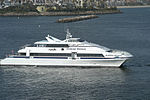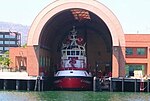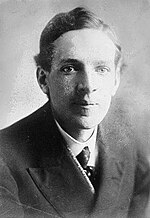Vincent Thomas Bridge

The Vincent Thomas Bridge is a 1,500-foot-long (460 m) suspension bridge, crossing Los Angeles Harbor in Los Angeles, California, linking San Pedro with Terminal Island. It is the only suspension bridge in the Greater Los Angeles area. The bridge is part of State Route 47, which is also known as the Seaside Freeway. The bridge opened in 1963 and is named for California Assemblyman Vincent Thomas of San Pedro, who championed its construction. Its chief engineer was William (Jim) Jurkovich who was instrumental in bringing pre-stress concrete bridge design to California. It was the first welded suspension bridge in the United States and is now the fourth-longest suspension bridge in California and the 76th-longest span in the world. The clear height of the navigation channel is approximately 185 feet (56 m); it is the only suspension bridge in the world supported entirely on piles.
Excerpt from the Wikipedia article Vincent Thomas Bridge (License: CC BY-SA 3.0, Authors, Images).Vincent Thomas Bridge
Ferry Street, Los Angeles
Geographical coordinates (GPS) Address External links Nearby Places Show on map
Geographical coordinates (GPS)
| Latitude | Longitude |
|---|---|
| N 33.749444444444 ° | E -118.27166666667 ° |
Address
Vincent Thomas Bridge
Ferry Street
90731 Los Angeles
California, United States
Open on Google Maps









